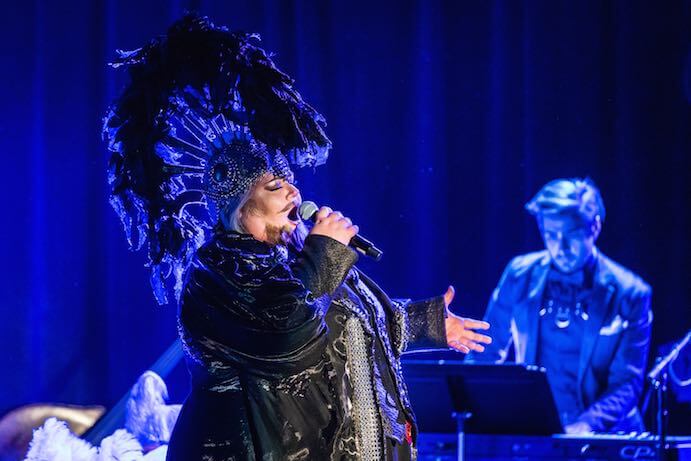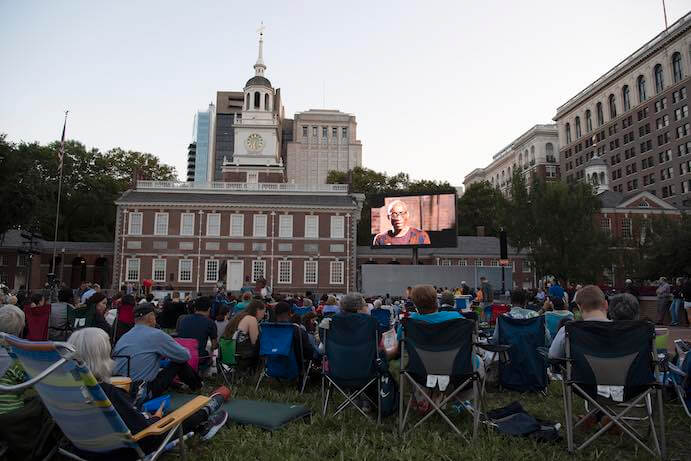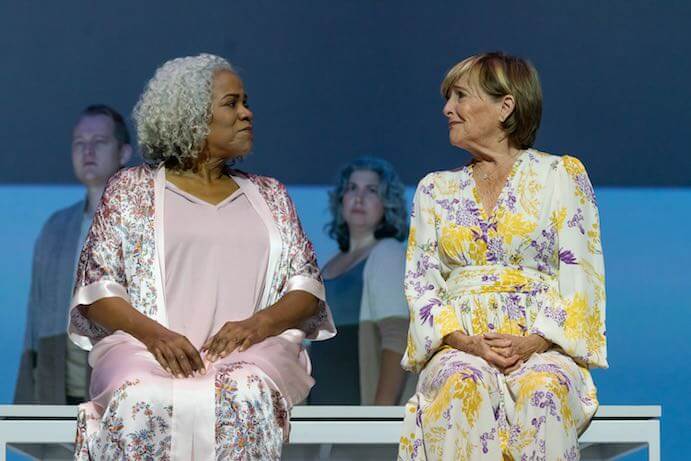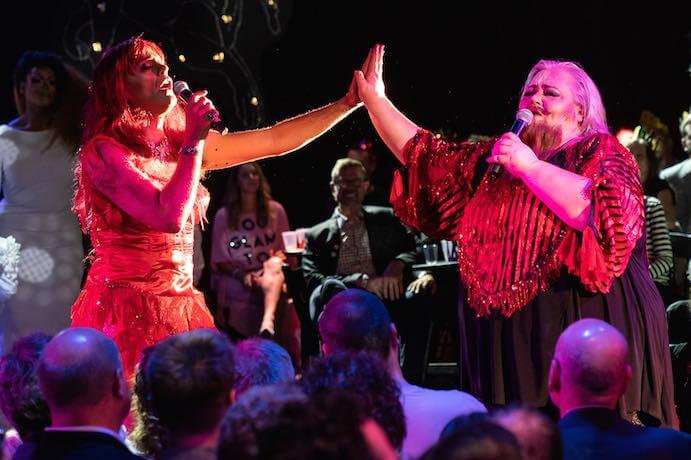Over the past couple of years, Opera Philadelphia has taken bold steps toward positioning itself at the forefront of the contemporary opera scene—in 2016, the company premiered Missy Mazzoli and Royce Vavrek’s intrepid Breaking the Waves, and in 2017, the company launched Festival O with acclaimed performances of Daniel Bernard Roumain and Marc Bamuthi Joseph’s We Shall Not Be Moved and David Hertzberg’s The Wake World as headliners.
Festival O effectively condenses Opera Philadelphia’s fall programming into a jam-packed two weeks that bring the phenomenon of binge-watching to the concert stage. In its inaugural year, O17 featured decidedly contemporary programming, which seemed to pave the way for continued growth in this direction in 2018. Opera Philadelphia Board Chairman Peter Leone noted that after O17, audiences “told us they loved what they had seen; and they wanted O18 to be surprising and different from O17.”
Unfortunately for O18, the “surprising” was a more conservative approach to programming, and the “different” was not a single woman composer or composer of color in the initial festival announcement. At a first glance, these statistics appear to contradict my own equitable programming standards for I CARE IF YOU LISTEN—however, the addition of a free video broadcast of O17’s We Shall Not Be Moved coupled with the exceptional nonbinary creative talent behind Queens of the Night—the “Ring Cycle of drag, tenors, and rock & roll”—allowed me to return to Philadelphia to see what O18 had to offer. The final O18 line-up included Lucia di Lammermoor, James Darrah’s reimagining of Poulenc’s La voix humane, Anthony Roth Costanzo’s Glass Handel, Lembit Beecher and Hannah Moscovitch’s Sky of Swings, John Jarboe and Daniel Kazemi’s Queens of the Night, and We Shall Not Be Moved at Independence National Historical Park.

Stephanie Blythe and Blythely Oratonio in “Dito and Aeneas: Two Queens, One Night” at O18–Photo by Steven Pisano
On September 28th, Jarboe and Kazemi’s three-part Queens of the Night concluded with “Dito and Aeneas: Two Queens, One Night,” featuring mezzo-soprano Stephanie Blythe in the pants role of dramatic tenor Blythely Oratonio alongside local drag sensation Dito Van Reigersberg as Blythely’s love interest, Martha Graham Cracker. While “Dito and Aeneas” is packed with flair, pizazz, and unabashed innuendo, the show also cleverly manipulates theatrical tropes to create a sharp, quick-witted, campy masterpiece.
The plot is simple: Blythely and Martha fall in love, but are now separated by an ocean and seeking to be reunited. As for the music, Jarboe explained, “We strung together many songs, and made them super gay.” The result is essentially L’Amour de Loin meets RuPaul’s Drag Race in a swanky cabaret—with exceptional vocal talent and insightful commentary on the state of opera to boot.
Blythely spends much of the show suffering from a “terrible case of the fourth wall,” which highlights the stark contrast between operatic/symphonic performers, who generally do not acknowledge their audiences, and drag/cabaret performers, who thrive on audience interaction and participation. Throughout the production, Stephanie Blythe’s vocal prowess was undeniable—underneath the facial hair and feathered helmet is an incredible richness of tone that allows Blythe to effortlessly transition between power ballads, verismo tenor arias, and a resonant soprano range.
Blythely is outstanding, but the unforgettable showstopper is Martha Graham Cracker’s exaggerated operatic death sequence, which progresses through a scatted “Queen of the Night,” Dido’s Lament tinged with R&B influences, and a final act of self-immolation accompanied by a blistering, up-tempo mash-up of “Burning Love” and “Disco Inferno” as Wacky Waving Inflatable Arm-Flailing Tubemen explode into the audience. Despite the rollicky frivolity on the surface, “Dito and Aeneas” is a celebration of free love, acceptance, and equitability at its core.
The Opera on the Mall HD broadcast of We Shall Not Be Moved on September 29th cast a more serious tone through the opera’s exploration of racial injustice and police brutality. The estimated attendance was 4,000 people, and Opera Philadelphia anecdotally noted that the audience appeared far more diverse than previous years. The success of this broadcast suggests that presenting works with topical themes in an environment that sheds the prohibitive cost barriers and the pretense of the concert hall yields more diverse audiences—and while presenting organizations cannot consistently tick all of these boxes and remain financially viable, the question of what Opera Philadelphia intends to do with this feedback remains to be seen.

Opera on the Mall: We Shall Not Be Moved at Independence National Historical Park at O18–Photo by Andre Flewellan
Contrastingly, the least accessible performance of the weekend was Beecher and Moscovitch’s Sky on Swings, which explores the cognitive degeneration of Alzheimer’s from the perspective of two women with the disease. Sky of Swings opens in the middle of a hallucination experienced by Martha, a current Alzheimer’s home patient, as short motivic fragments, dense scalular flurries, and busy textures depict her scattered mind. With the introduction of Danny, a woman about to enter the Alzheimer’s home, it initially appears that her more lucid character is represented by a stable, clearly articulated sense of pulse, but this quickly devolves into the same aesthetic as the opening. What results is a compositional language that is very much the same throughout: an eschewed sense of meter, aggressive interjections, disjunct vocal lines, and pitch bends/glissandi.
The visual and textual elements of contemporary opera usually help to create a sense of familiarity for audiences, making a challenging score easier to contextualize. However, the set for Sky on Swings is minimalist and sterile, and the text is intentionally disjointed to represent the mind of someone with Alzheimer’s, so the complexity of score is pushed to the forefront. Marietta Simpson and Frederica von Stade gave commanding performances, but the obscurity of the music, libretto, and staging left little for audiences to connect with.

Marietta Simpson as Martha and Frederica von Stade as Danny in the world premiere of Sky on Swings at O18–Photo by Steven Pisano
In the wise words of Martha Graham Cracker, “If opera is to take risks and join with other art forms, the audience has to be moved.” Granted, this was clarified by telling the standing audience members, “No, really, you all need to move” in order to assemble a catwalk for a dramatic rendition of “Chariots of Fire,” but many a true word is spoken in jest. Opera Philadelphia’s Festival O has already demonstrated the efficacy of joining opera with visual arts, fashion, and dance—however, joining classical music to varied stylistic influences and contemporary themes seems to be the area where Opera Philadelphia is struggling to commit.
Opera Philadelphia General Director and President David Devan remarked that O18 “is not our final destination but part of an ongoing journey of inquiry and creativity.” Arguably, some of the most successful productions staged by Opera Philadelphia in recent years have been those where audiences identify with the subject matter or recognize musical influences outside of the classical tradition—and these works have mostly been created by women, non-binary people, and people of color. O18 was surprisingly tentative, lacking the self-assuredness of these recent productions. This sets O19 up to be a defining year for Opera Philadelphia, with a chance to solidify a leadership position in the realm of contemporary opera on the line.





















